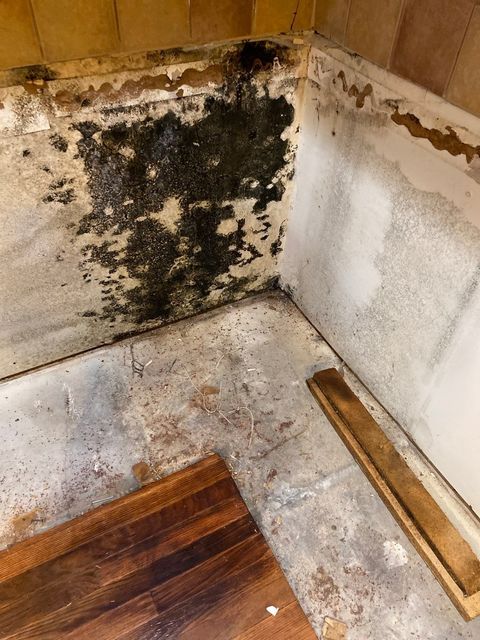MOLD REMEDIATION
Mold Remediation Process
Old North State Restoration follows the IICRC S520 Standard for Professional Mold Remediation Third Edition
Old North State Restoration utilizes the Carolina Protocol for mold remediation. The Carolina Protocol process involves the use of regular hydrogen peroxide, six to eight percent in strength, as the cleaning agent. Other commercial grade hydrogen peroxide based products such as Serum can be used. The appropriate steps are as noted below and should be used by trained technicians with use of personal protective equipment (PPE).
- Condition 1 = “normal fungal ecology” = an indoor environment that may have settled spores, fungal fragments or traces of actual growth whose identity, location and quantity are reflective of a normal fungal ecology for a similar indoor environment.
- Condition 2 = “settled spores” = an indoor environment which is primarily contaminated with settled spores that were dispersed directly or indirectly from a Condition 3 area, and which may have traces of actual growth.
- Condition 3 = “actual growth” = an indoor environment contaminated with the presence of actual mold growth and associated spores. Actual growth includes growth that is active or dormant, visible or hidden.
Step 2. An Indoor Environmental Professional (IEP) is consulted if appropriate.
Step 3. A work protocol is written by either an IEP or the remediation contractor.
Step 4. The building of proper containment for the work site is completed, and correct negative air pressure is established.
Step 5. Based on the protocol, demolition and/or removal of what material can and should be removed is performed.
Step 6. The remaining structure (framing lumber, plywood, oriented strand board, etc.) is to be cleaned using hydrogen peroxide.
a. All surfaces are HEPA (high-efficiency particulate air) vacuumed.
b. All materials should be dried, if needed, to below 16 percent moisture content.
c. All affected surfaces are sprayed with hydrogen peroxide until they are visibly wet.
d. The hydrogen peroxide is allowed contact time according to the manufacturer’s label instructions.
e. All the surfaces are again HEPA vacuumed.
Step 7. An EPA-registered biocide should be applied, following label directions, to ensure remaining microbes are destroyed.
Step 8. All materials should have been dried to a proper dry standard, which must be below 16 percent moisture content, double-checking to ensure all materials are dry.
Step 9. An inspection is performed by the remediation contractor. This inspection may include the use of a particle counter or other sampling tools or techniques. The goal is to return a structure to Condition 1.
Step 10. The use of an IEP for clearance testing, if appropriate.
Step 11. Consideration should be given to applying some form of surface protection, which will inhibit future microbial growth.
Step 12. Reconstruction is performed, when necessary, in accordance with local building codes and ordinances.
Contact Information
Phone: (919) 502-0925
Email: fowens@onsrestoration.com
Serving the state of: Johnston County, Wake Country, Durham County, Orange County






License: Private Associations: BBB A+, IrcRC, Normie
- Mon - Sun
- Open 24 Hours
Contact Information
Phone: (919) 502-0925
Email: fowens@onsrestoration.com
Serving the state of: Johnston County, Wake Country, Durham County, Orange County






Private Associations: BBB A+, IICRC, NORMI
- Mon - Sun
- Open 24 Hours



